How to Groom your Dog at Home
With a lot of us stuck at home at this time and the groomers shut, you may have a hairy overgrown dog situation on your hands. But never fear, in this article we will discuss basic dog coat care through to clipping your dog plus nail, ear and bottom care.
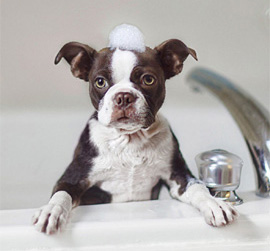
Even in normal times, you may find this article useful if you want to learn how to care for your dog's coat and grooming needs yourself or between grooming appointments.
A lot of people who use a groomer will know that dog groomers do more than just wash and trim your dog's coat. They also take care of their ears, nails and sometimes their bottoms too. So we will cover all those things as well.
At first glance if this looks like a big job with lots to learn, don't worry... much of it is easy to do and you may already know a lot of it or some may not be relevant to your particular dog, so have a read and take from it what you need.
There are other aspects of dog care that we have not covered here, of course. Here we are simply covering some of the jobs your groomer may usually do.
Brushing your dog
Whether your dog usually goes to the groomers or not, all dogs should be brushed at home on a regular basis. Brushing your dog should be done at least once or twice a week (more often for silky or curly coats). Brushing is great for your dog's skin and coat health and helps distribute good coat oils and remove dirt and debris. Of course, for coats that are prone to tangles, regular combing and brushing is essential to keep those coats mat free.
Regular brushing also makes your dog feel pretty good and can do wonders for your bonding, so make it a fun and enjoyable time with your dog. Go slowly and be gentle so brushing becomes a pleasurable thing for you both. If you are rough or impatient, your dog is likely to run for the hills as soon as they see the hair brush. Small regular sessions with bribes (lol) are better than mammoth irregular sessions when the dog is maybe already matted and likely to feel stressed by it all.
I like to start on the back as most dogs love this area being brushed. It gets everyone relaxed and comfortable. Tails, legs and faces are less pleasant for your dog so leave those until last and proceed gently and kindly.
If you brush your dog at home on a regular basis you are much more likely to spot any issues they may have early from skin issues, lumps or bumps or other issues you may not have otherwise noticed, so it is really worth it on so many levels.
Some dogs have a short or easy coats to brush while other coats can have more specific needs. For example if your dog has an undercoat, don't just brush the top coat and call it a job done. In our The Best Dog Brush for Your Dog? article we discuss the different kinds of dog brushes available and the needs of different coat types, including care of undercoats and shedding.
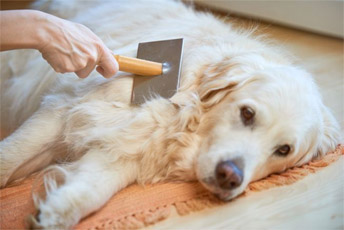
Bathing your dog
Many people over bathe their dogs. It is not necessary and can actually do your dog's coat and skin more harm than good. Once or twice a year (yes, a year) is generally adequate. My dogs get a bath once a year (in the spring, in case you are wondering), unless they have rolled in something dreadful that can't be solved any other way. People always comment on how soft and healthy my dogs coats are and how they do not smell of dog at all. In fact I was on the TV a few months ago talking about this exact thing and the presenter was amazed how good my terrier looked and smelt, and even more amazed when I told her that he was last bathed a year ago. People have just got into this habit of bathing their dogs a lot and it really is not the best thing to do. A good brush a few times a week is perfect, as mentioned above.
For the times you do need to give your dog a bath, make sure to always use a dog shampoo. Human shampoo will do them no good at all.
Brush or comb your dog's coat through first. I like to put a couple of non-slip rubber bath mats in the bath for my dog to stand on, so they are not slipping and sliding about in the bath, which can feel pretty scary for them. Use lukewarm water to soak their coat through thoroughly. Make sure the water is not too hot or too cold. We want to make this experience as pleasant as possible for your dog. Then shampoo your dog, avoiding the face. I use a clean wet flannel to gently wash the face and ears.
I like to put the plug in the bath for the first few minutes of bath time, so they are standing in about an inch of slightly soapy water. This is usually enough to clean their feet or at least get things started. Most dogs do not like their feet being touched or cleaned, so this can really help.
Once you have followed the shampoo's instructions, rinse very thoroughly, making sure not to leave any product on your dog's coat or skin. Repeat the process with a dog conditioner, if you are using one.
Some people use a hair dryer to get their dog dry but this can be scary and also make them hot, so many dogs will not like it at all. Instead, use a microfibre dog towel and then pop a dog drying coat on your dog and let them go for it, lol. Most dogs get the zoomies after a bath. Drying coats will save your soft furnishings, help your dog to dry quickly and also keep them warm if they tend to shiver and shake after a bath.
Once they are all dry, comb or brush through the coat again. Job done.
Cutting your dog's nails
Whatever dog you have, there is no escaping this job. All dogs have claws and they grow constantly, just like our fingernails, so your dog's claws will need cutting regularly. Rather than repeating myself, please see When and How to Cut Your Dog's Nails. The most important thing to remember with nail cutting is to do little and often. Don't try to take big chunks off in one sitting as you will likely cut your dog's quick and believe me, they will remember that forever, lol.
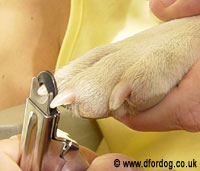
Dog ear care
Most dogs don't need a great deal of ear care. Usually it is enough to check them over, making sure they are clean and healthy. Dog's with waxy or hairy ears do need a little more care in this area though. For waxy ears, a good dog ear cleaning solution is great at getting deep into the dog's ear for a deep and effective clean.
If your dog is fluffy and has hair inside their ears (usually breeds like Poodles, Bedlingtons, Shih Tzus, Schnauzers etc..) then ear plucking is something your groomer probably does during their regular grooming session. The idea is to have the ear free from hair, wax and debris so the ear canal is clean and can 'breathe' and stay clear of gunk and infections. If you have never done this before, you can either get some medicated ear powder and have a go at powdering and plucking. Alternatively, check your dog's ear's regularly, keep them clean and see how it goes until the groomers are open again.
Ear hair plucking is one of those controversial topics so only you can decide. I generally err on the side of "if it ain't broken don't fix it" but if your dog suffers from problems because of having hairy ears and usually has them plucked then this is something you may want to learn to do. At the very least I would say a careful trim of the ear hairs has got to be better than nothing... just be careful though.
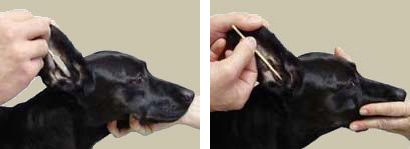
Dog hair trimming
I haven't had to get the trimmers out since I was the proud Mum of a Bedlington terrier. Since then all my dogs have had coats that do not need trimming. But I am in the minority. Many dogs benefit from a bit of a trim, whether it be hair growing in-between the paw pads or long hair around the mouth that can get smelly and unhygienic.
If your dog just needs trimming in some areas, get a dog trimmer that is narrow, so you can easily reach all those fiddly areas.
Dog hair clipping
If you have a dog who needs full body clipping, you are going to have a new job to do while all the groomers are closed. You can try clipping your dog's coat with scissors but this can be time consuming and may come out a bit uneven. If you can afford the expense of a clipper grooming tool, go for it - you will be a pro in no time. I have spoken to quite a few people during lockdown who have purchased clippers and had a go at home and they have all been pleasantly surprised at how easy it is. OK, it may not be a perfect job looks wise but your dog will thank you for it.
If you are thinking of buying some dog clippers, the first thing to check is what the clippers are suitable for. Some will be suitable for smaller dogs, some for larger dogs and some will be universal.
It is best to use a clipper on your dog when their coat is clean and dry. Dirty or greasy fur will blunt the clipper blades quicker. Before you start, please also check that the clipper blades are sharp and well oiled. If you are using a cordless clipper, check it is fully charged before you start. Imagine getting part way through the job and the clippers run down. Arhghgh.
Anal Glands
Before you close this page in shock, the first thing I want to point out that not all dog's need their anal glands emptying. In fact I think they are often overdone by people and groomers. Again, if it isn't broken, don't fix it. If your dog doesn't have an issue with their anal glands, leave them well alone. But if they do need help in this area, please see How to Empty a Dog's Anal Glands.
That's it
Phew, we got there. Now have a glass of wine, lol.
I hope this has been of some help. Here's to lots of happy, clean and well cared for dogs.

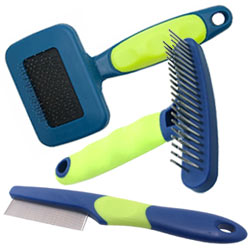
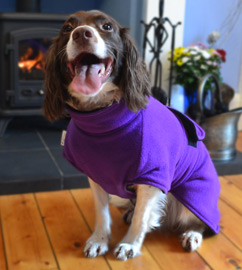
This is some valuable information.
thanks